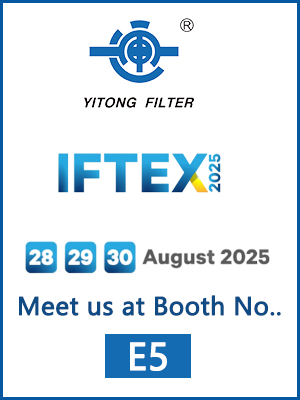Livestock farming utilizes domesticated animals such as cattle, poultry, and other wildlife like deer, musk deer, foxes, minks, otters, and quails. Through artificial breeding and reproduction, these animals convert grass and feed into products such as meat, eggs, milk, wool, cashmere, hides, silk, and medicinal materials. Unlike subsistence animal husbandry, the main features of livestock farming are centralization, scale, and profit-oriented production. Livestock farming is a crucial link between humans and the natural world in material exchange.
Livestock farming is one of the components of agriculture, alongside crop cultivation, forming the two main pillars of agricultural production.
Historical Application of Air Filtration Systems
In the early 1970s, air filters entered the livestock industry during SPF (Specific Pathogen-Free) animal breeding processes. It wasn't until the 1990s that some genetic breeding companies in Europe and America applied this technology to a small number of core breeding farms. Only by the late 1990s and early 2000s did air filtration systems transition from experimental animal use to application in a few scale-up breeding farms. Beginning in the late 1990s, as one of the technologies to prevent airborne disease transmission, air filtration systems began to be more widely applied in livestock farms globally. In recent years, it has been well-established that airborne transmission is a major route for many pathogens, including Porcine Reproductive and Respiratory Syndrome Virus, influenza, and Mycoplasma pneumoniae. Through dust particles or other biological aerosols in the atmosphere, pathogens can spread from one production site to another via the air. Years of clinical application and research have confirmed that air filtration systems can significantly interrupt the airborne transmission of pathogens within animal populations. However, the transmission of pathogens is not limited to airborne transmission. Therefore, integrated air filtration systems with comprehensive disease prevention measures can effectively and reliably reduce the risk of livestock farming. A four-year field application study conducted by the University of Minnesota in the United States confirmed that integrated air filtration systems can maintain negative pathogens for diseases like Porcine Reproductive and Respiratory Syndrome Virus and Mycoplasma pneumoniae.
Introduction to Air Filtration System Selection
Principle of Air Filtration System for Epidemic Prevention: There is a misconception that air filtration systems directly filter pathogens. In reality, air filters do not directly filter viruses or bacteria; they filter the medium of pathogen transmission: dust particles or other aerosols. Pathogens cannot spread autonomously and must attach to a medium to spread. The diameter of this medium in nature is usually 0.3 to 1 micrometers, so air filters target particles of this size to intercept particles carrying pathogens.
Filter Efficiency of Air Filters: After years of global application, F9 grade (MERV 15-16) air filters can effectively interrupt airborne transmission of pathogens. F8 grade filters, due to their lower efficiency (20% lower than F9), are only used as transitional applications in low-risk environments. Currently, F9 grade filters are used in the livestock industry in Europe and America. Due to the relatively new application of this technology domestically and cost considerations, about 20% of livestock populations in China still use F8 grade filters. Air filtration systems are the final line of defense in the entire biosafety and epidemic prevention system. Therefore, it is recommended that users use filters with higher filtration levels to remove pathogens as much as possible if conditions permit.
For certain parameters of filtration efficiency, users need further discernment. For example, when discussing a filtration efficiency of 85%, we need to understand that this is just a relative accuracy, and the absolute accuracy pertains to whether this filtration efficiency applies to 0.3 micrometers or other diameter particles.
Air filter media: Unlike civil industrial or medical applications, air filtration systems used in breeding farms expose large areas of filters outdoors to factors such as sunlight, high humidity, high dust, high corrosion, and low energy consumption fan usage. Conventional filters perform poorly in breeding farms, mainly manifested by damage and air leakage during use, excessive wind resistance affecting ventilation, and disposal of used filters affecting the environment.
Air filter media in large-scale breeding farms have been updated to three generations:
The first generation is glass fiber filter media. Conventional glass fiber filters are widely used indoors in civil and medical industries, but their poor durability and high wind resistance make them unsuitable for breeding environments. Some early American farms used glass fiber material filters, but they have been mostly phased out.
The second generation is polypropylene fiber filter media. Its filtration and antibacterial performance are stronger than glass fiber filters, but its poor durability and high wind resistance led to its withdrawal from the breeding industry.
The third generation is composite fiber filter media. The introduction of composite fiber filters truly means that high-efficiency filters can be applied to breeding farms. The low wind resistance and moisture resistance of this material are unmatched by other materials. Currently, about 90% of pig farms worldwide use this material for efficient filtration, especially in high humidity and snow areas, composite fiber filters indeed show stable performance.
Is product customization viable? Customizing different sizes or types of air filters based on industry experience is not always a rational choice. Customizing product types and sizes may be necessary when certain pens are renovated or upgraded due to limitations in building structures. However, most of the time, we recommend users to use industry-standard sizes or universal type filters as much as possible. The advantage of using standard size filters is that users have more consumables to choose from during operation and maintenance in the future. 24 inch x24 inch and 20 inch x24 inch are two industry-standard sizes, and most standard size filters from different brands can be replaced without modifying building hardware.
Air filtration systems are part of all-weather epidemic prevention systems and also part of fresh air supply and ventilation systems. This determines that the supply chain of air filters needs to be responsive and uninterrupted. Once customized sizes or types are adopted, it means that users may face the potential risk of discontinuation of consumable replacements.
Common ventilation and filtration schemes:
There are five climate types in China, which also determine that different types of ventilation are used in breeding farms in different regions. Common types include negative pressure ventilation and positive pressure ventilation. Therefore, in addition to air conditioning filtration systems, there are three common ventilation and filtration schemes used in actual production:
Negative pressure ventilation filtration: Requires a large filter area, low filter replacement frequency, low ventilation system energy consumption, high requirements for pen building structures, and high applicability in regions.
Positive pressure ventilation filtration: Requires a small filter area, high filter replacement frequency, high ventilation system energy consumption, low requirements for pen building structures, and low applicability in regions.
Balanced ventilation or micro-positive pressure ventilation: Requires a medium-sized filter area, high filter replacement frequency, high ventilation system energy consumption, low requirements for pen building structures, and high applicability in regions.
Well-designed negative pressure ventilation has good cooling capacity and economical energy consumption, making it the choice for most users. Due to the airtightness issue of negative pressure ventilation, when users consider using air filtration systems, they first consider whether negative pressure ventilation is compatible with the air filtration system. Many users have consulted about which ventilation and filtration scheme is suitable. Our suggestion is to depend on the required air cleanliness level and the region where the breeding farm is located. For SPF animal farms, positive pressure ventilation filtration is the preferred scheme; for core group farms, multiple schemes are used to match different pens; for regions and breeds sensitive to heat emergencies, we prefer negative pressure ventilation filtration design to ensure good ventilation effect and low energy consumption to meet actual production needs.
Classification of ventilation by power source: natural ventilation, mechanical ventilation;
Classification by ventilation service scope: comprehensive ventilation, local ventilation;
Classification by airflow direction: supply (in), exhaust (smoke);
Classification by ventilation purpose: general ventilation, hot air heating, exhaust and dust removal, accident ventilation, protective ventilation, building smoke prevention, etc.;
Classification by power location: centralized power and distributed power.
How is the filtration grade of air filters divided?
Air filters are divided into primary air filters, medium-efficiency air filters, and high-efficiency air filters according to the filtration grade;
Primary air filters are generally used for dust removal and treatment, high-temperature ovens in car painting plants; medium-efficiency air filters are generally used for central air conditioning and centralized ventilation systems; high-efficiency air filters are generally used for clean projects in various industries, as well as air conditioning and process air supply systems with special requirements.
So, how do you choose the right filtration and ventilation scheme?
The choice of filtration and ventilation scheme depends on the air cleanliness level L6 or L9 of the pig farm and the location of the pig farm;
Positive pressure ventilation filtration is the best choice for boar stations and SPF breeding farms. Positive pressure ventilation filtration is the best choice for boar stations and SPF breeding farms.
For regions and pig farms sensitive to heat emergencies, it is recommended to use negative pressure ventilation filtration design. Ensure good ventilation effect and low energy consumption to meet actual production needs.
Points to note in the use of air filtration systems:
1) Before the air filtration system in the pig house is put into use, it is necessary to test the air tightness of the pig house, the installation of filters, and the airflow patterns in winter and summer to ensure the effectiveness of the system.
2) If the unit system is not used, there should be detailed instructions for filter replacement operations.
3) When to replace the filter is also a question we need to consider. The best solution is to decide whether to replace the filter based on the changes in pressure on each layer (can achieve positive pressure air filtration units). However, many systems do not test static pressure differences, and filters can be replaced according to cycles.
None

